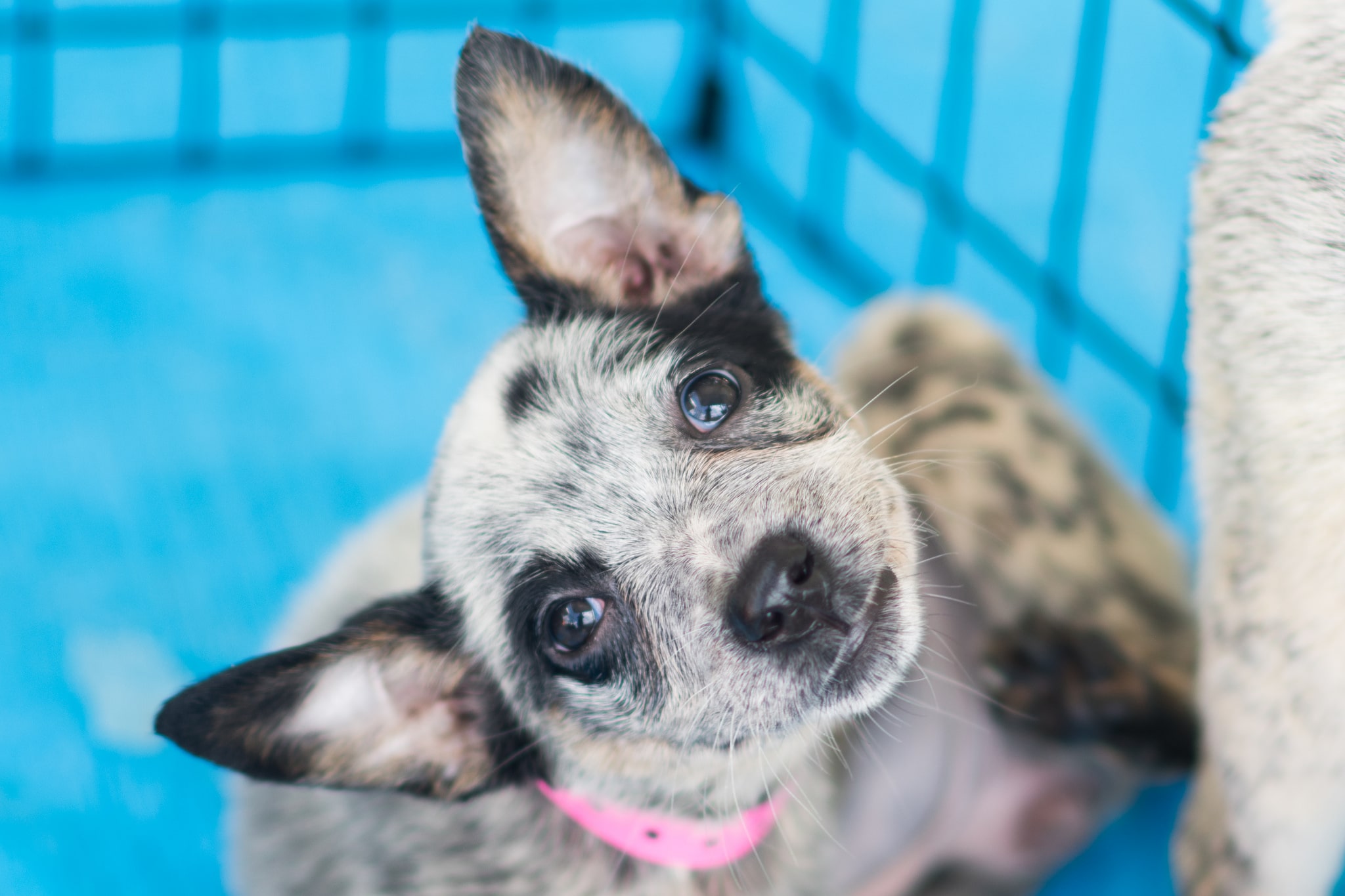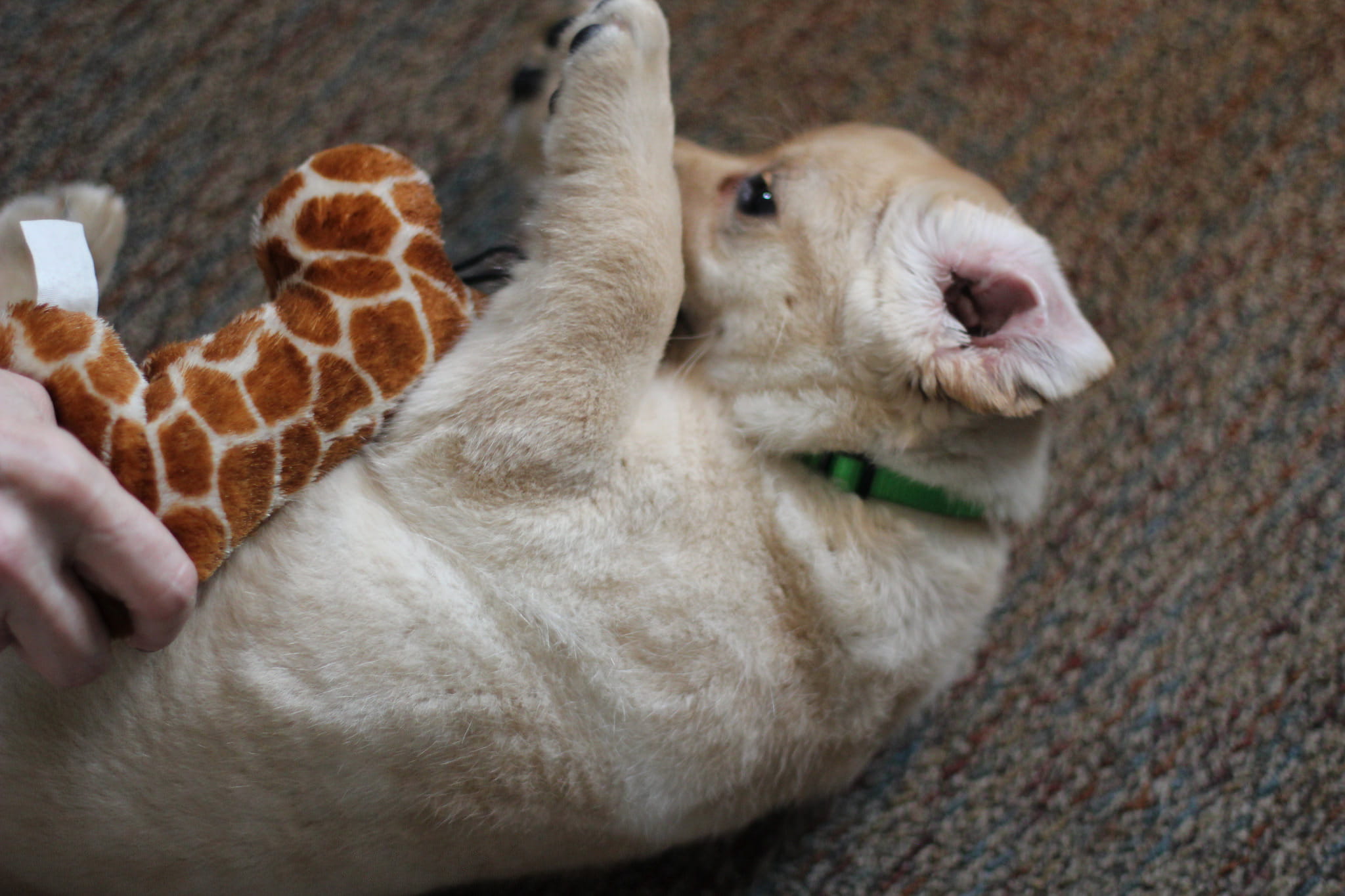Inspiring resources for first time dog owners

For the first-time dog owner, the idea of being completely responsible for your best friend can be daunting, even scary.
You’ll quickly learn that puppy breath is a cure-all for anxiety, but unfortunately not a cure-all for training questions.
New owners may not know where to turn, but modern times have made it easier than ever to find a large collection of wonderful resources, many of which we’ll list in this article for you. From the stresses and joys of the first 24 hours to understanding how to care for your dog for years to come, we’ve got you covered.
But before you can start building that irreplaceable friendship with your new best friend there is one key thing you (and your dog) need to learn first: communication is key.
For those short on time, because they would rather be playing with their puppy than reading this article(we don’t blame you!), our top two resources for new dog owners are Karen Pryor’s book “Don’t Shoot the Dog” and Cesar Millan’s audiobook “Cesar’s Way” on Amazon.
Plan for the best, plan for the worst, plan for everything
Organization is key when you bring a new puppy home, and it’s important to do your research ahead of time. With that being said, in my experience puppies are quite talented at taking your plans and chewing them up. Think of planning around your dog as a way to predict what could happen instead of what is going to happen.
Depending on the age of your dog, their energy level, special health needs, and other conditions you’ll have to plan accordingly. Here are some general concepts on what to expect for the first 24 hours, week, and year of your puppy’s life.
First 24 hours with your puppy
Expect this time to be a whirlwind of emotions for both you and your dog. It’s perfectly normal to switch between freaking out over the decision you’ve just made, being filled with glee every time your dog looks at you and having anxiety over everything that could go wrong.
The folks over at VetStreet have a great article on what to expect, but we’ll distill it down for you.
- First, keep it simple don’t buy a million toys, beds, etc a simple puppy starter kit is all you need.
- Second, keep your dog on the same food they were eating while they adjust to the move.
- Lastly, find a rhythm as soon as possible. Dogs crave routine, and the sooner you can get yourself and your dog into one the easier the first week together will be.
The first week
Congratulations, you’ve made it through the first day! If you’re noticing that your dog is smelling everything in the house, don’t worry, they aren’t judging your cleaning habits. Some dogs can smell up to a week into the past so that takeout food you had four nights ago might still be lingering in the living room.
On the topic of smell, it is time to start introducing your dog to new scents, particularly those of your trusted friends and other dogs in the area. Don’t overwhelm your dog with a party, instead invite a select few trusted friends over (preferably dog people) and let your dog meet them. This is all part of puppy socialization which you can read more about here.
Take your dog to the dog park at off-peak hours and for walks around the neighborhood (these activities are great for building routines) to help them get acclimated to the area. The more positive experiences they have together with you the quicker trust will grow, and trust is a crucial step towards clear communication.

With patience and positive reinforcement, this cute little furball will grow up to be a happy loving family member. Image: Eli Christman
The first year and beyond
At this stage, you should have a routine, trust, and be enjoying plenty of wonderful times with your dog. They are still young, of course, and training is a lifetime activity that both you and your dog will undergo together. Your dog may not be trained yet, but they should certainly be acclimated to your lifestyle, the neighborhood, and your friends (and your friends’ four-legged friends!).
At this stage you may have a vacation planned, or perhaps a business trip, so make sure to prepare your dog emotionally for your temporary departure. Remember that you are your dog’s best friend and they miss you every day, but that doesn’t mean it is cruel to have someone dogsit or have them boarded somewhere. No matter the situation just remember to plan for all circumstances.
Forming a plan to fit you and your dog
At this point, you’ll probably have friends that have recommended their favorite book, YouTube trainer, or training class for you to check out. Hear me out here - take those recommendations! The more you can absorb, the better you and your dog will be in the end.
Training isn’t about finding “the perfect solution” to the problem you and your dog are trying to accomplish, because let’s face it, no program is going to be perfect. Instead, it is about learning how to deal with changing situations with a background of knowledge to pull from.
We’re going to throw a few more recommendations into the mix (resources that have personally helped us) for you to consider, these should help round out your knowledge base and prepare you for a variety of dog-related situations.
Don’t Shoot the Dog - Karen Pryor

In this book, Pryor focuses extensively on positive reinforcement as the key element when training anything, and emphasizes her case through her “Ten Laws of Shaping.”
I’m not claiming that Pryor will fix every problem you have with your dog, of course, but once you dig deep into her laws of shaping the genius of her theory becomes clear. For instance, her 7th law states that “if one shaping procedure is not eliciting progress, find another; there are as many ways to get behavior as there are trainers to think them up.”
One other key point of this book is that the practices you’ll learn aren’t only useful for your dog, but can also be used for other animals, people, and situations in your life. With Pryor’s positive reinforcement techniques under your belt, you’ll be changing behaviors in constructive ways, a skill that any new dog owner will surely appreciate having.
You can purchase and read more about Don’t Shoot the Dog on Amazon.
Cesar’s Way: The Natural, Everyday Guide to Understanding and Correcting Common Dog Problems - Cesar Millan

In Cesar’s Way, the main emphasis of the book is to understand your dog from your dog’s perspective, essentially putting yourself in their paws and seeing their world through their eyes. Millan covers a variety of topics in his book, first discussing how we use positive or negative energy to influence those around us before moving on to a deeper discussion into dog psychology.
Millan’s book is great for new trainers since it covers a diverse range of dog behaviors, from aggression to pack mentality, fear-filled dogs, and dogs that never seem to listen. Aside from offering training tips, Millan also discusses diet recommendations, and positive ways to live healthily alongside your dog, and ends his book with an investigation into the way dogs help fulfill our lives.
You can get the audiobook and read more about Cesar’s Way on Amazon.
Pryor vs. Millan
It is hard to say which book is more helpful because although Pryor’s positive reinforcement methods can be used across a wider spectrum, Millan’s more dog-centric writing offers a more example-based methodology.
If you only have time for one book, we’d recommend Cesar’s Way - not specifically for the content, but more because the audiobook is perfect for listening to while you are walking your dog or sitting on a park bench at the dog park.
If you have the time for both of these books, please use them in conjunction to form your own training style.
No plan (or training method) fully survives the test of time: learn to adapt
I said it earlier and I will say it again: when your training plan fails do not become discouraged.
Dogs are spirited creatures, and even though you have the best intentions when trying to leash, potty or trick train them they may not understand what you are trying to do. Only by fostering clear communication between your dog and yourself will you find that wonderful harmony that dog owners speak so highly of.
Your dog can certainly be your best friend with the right training, respect, and communication - but if you aren’t careful you can also pass along and create bad habits as well. Take in as much information as possible, sleep on it, scratch some bellies while dwelling on it, and before you know it you and your furry best friend will be living in harmony together.
Feature image: Erik Drost


